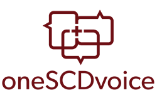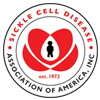Trusted Resources: Evidence & Education
Scientific literature and patient education texts
Coexistent Sickle Cell Disease Has No Impact on the Safety or Outcome of Lytic Therapy in Acute Ischemic Stroke: Findings From Get With The Guidelines-Stroke
source: Stroke
year: 2017
authors: Adams RJ, Cox M, Ozark SD, Kanter J, Schulte PJ, Xian Y, Fonarow GC, Smith EE, Schwamm LH
summary/abstract:BACKGROUND AND PURPOSE:
The recommended treatment for ischemic stroke is tPA (tissue-type plasminogen activator). Although sickle cell disease (SCD) represents no known contraindication to tPA, National Heart Lung and Blood Institute of the National Institutes of Health recommended acute exchange transfusion for stroke in SCD, not tPA. Data on safety and outcomes of tPA in patients are needed to guide tPA use in SCD.
METHODS:
We matched patients from the American Heart Association and American Stroke Association Get With The Guidelines-Stroke registry with SCD to patients without SCD and compared usage, complications, and discharge outcomes after tPA. Multivariable logistic regression models using generalized estimating equations were used to assess outcomes.
RESULTS:
From 2 016 652 stroke patients admitted to Get With The Guidelines-Stroke sites in the United States, 832 SCD and 3328 non-SCD controls with no differences in admission National Institutes of Health Stroke Scale or blood pressure were identified. Neither the fraction receiving thrombolytic therapy (8.2% for SCD versus 9.4% non-SCD) nor symptomatic intracranial hemorrhage (4.9% of SCD versus 3.2% non-SCD; P=0.4502) was different. There was no difference in a prespecified set of outcome measures for those with SCD compared with controls.
CONCLUSIONS:
Coexistent SCD had no significant impact on the safety or outcome of thrombolytic therapy in acute ischemic stroke. Although the sample size is relatively small, these data suggest that adults with SCD and acute ischemic stroke should be treated with thrombolysis, if they otherwise qualify. Addition studies, however, should track the intracranial hemorrhage rate and provide information on other SCD-related care such as transfusion.
DOI: 10.1161/STROKEAHA.116.015412
read more full text
Related Content
-
Debbie’s Story on BBC2 Hospitalhttps://www.facebook.com/bbctwo/videos/1...
-
Gene therapy may help cure sickle cell disease, study saysA gene therapy that could provide a perm...
-
A Multiyear Cross-Sectional Study of Guideline Adherence for the Timeliness of Opioid Administration in Children Wit...Study objective: The National Heart, Lu...
-
CRISPR deployed to combat sickle-cell anaemiaA mutation in a single DNA letter causes...
-
Sickle Cell Trait and Risk of Cognitive Impairment in African Americans: The Reasons for Geographic and Racial Diffe...Background: Sickle cell anemia (SCA) has...
-
The ‘Voice of Lagos’ is silent: Entertainer Tosyn Bucknor dies at 37Nigerians are paying tribute t...
-
Hydroxyurea for Children – A HRSA EMBRACE Projecthttps://www.youtube.com/watch?v=LprBMpPb...
To improve your experience on this site, we use cookies. This includes cookies essential for the basic functioning of our website, cookies for analytics purposes, and cookies enabling us to personalize site content. By clicking on 'Accept' or any content on this site, you agree that cookies can be placed. You may adjust your browser's cookie settings to suit your preferences. More Information
The cookie settings on this website are set to "allow cookies" to give you the best browsing experience possible. If you continue to use this website without changing your cookie settings or you click "Accept" below then you are consenting to this.




 +myBinder
+myBinder
